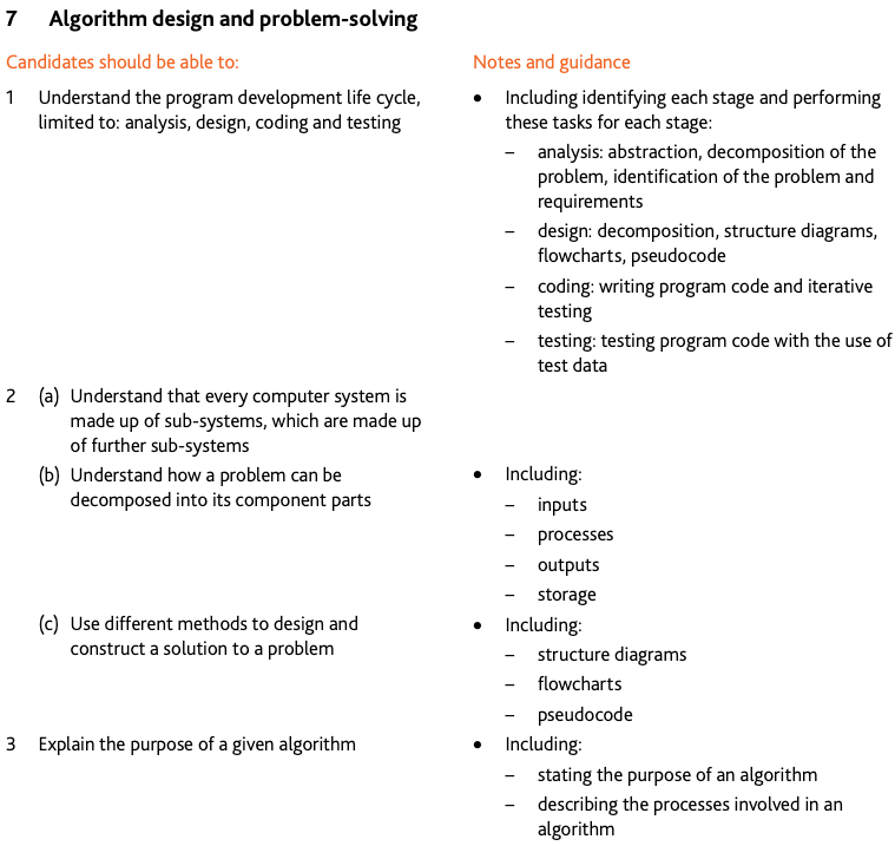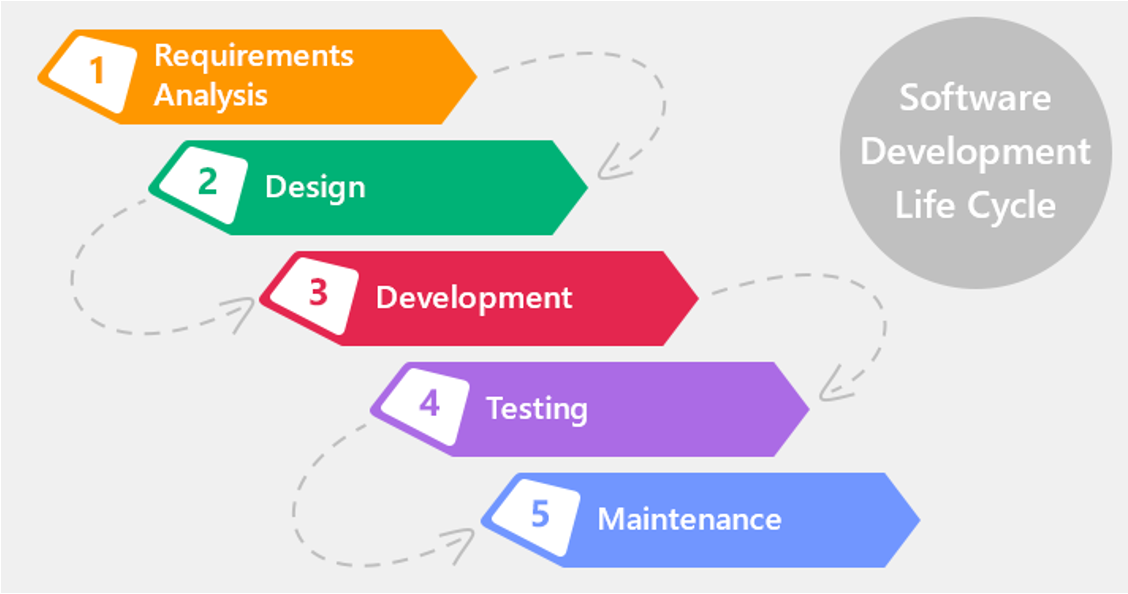The program development life cycle

Life cycle

Analysis
The analysis stage uses abstraction and decomposition tools to identify exactly what is required from the program.
Abstraction keeps the key elements required for the solution to the problem and discards any unnecessary details and information that is not required.
Decomposition breaks down a complex problem into smaller parts, which can then be subdivided into even smaller parts, that can be solved easily.
For example, getting dressed:
- Select items to wear
- Remove any clothes being worn
- Put selected items on in order.
Design
- When the design stage is complete, the programmer should know what is to be done, i.e. all the tasks that need to be completed, how each task is to be performed and how the tasks work together.
- This can be formally documented using structure charts, flowcharts and pseudocode.
Coding
- The program or set of programs is developed.
- Each module of the program is written using a suitable programming language and then tested to see if it works.
- Iterative testing means that modular tests are conducted, code amended, and tests repeated until the module performs as required.
Testing
- The completed program or set of programs is run many times with different sets of test data.
- This ensures that all the tasks completed work together as specified in the program design.